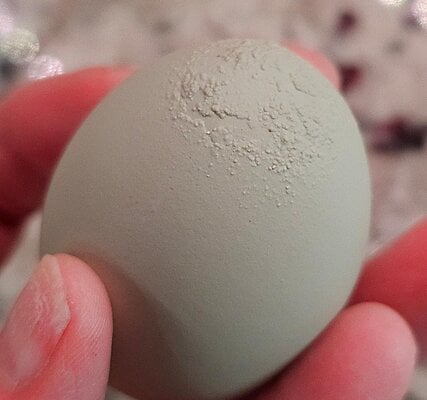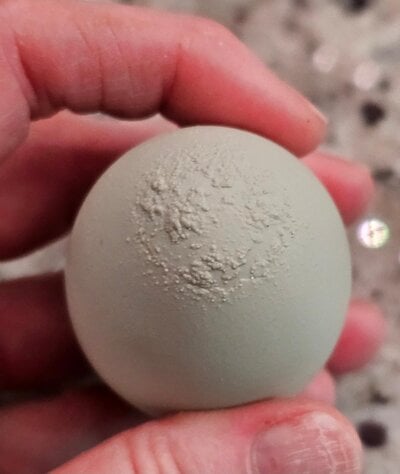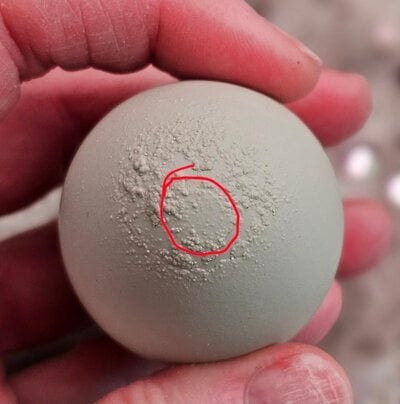BonnieBlue
Songster
- Apr 20, 2022
- 211
- 362
- 153
One of my girls, who has only been laying for two weeks, laid an egg this morning that was the first "not perfect" egg I have had from any of my girls. Around the top/pointed end, the egg was rough, in a circle around the top. The area inside my red line was a shade lighter than the rest of the egg, though you cannot see that in the pics. The shell appears to be hard, as all of her eggs have been.
Is this sort of thing the egg shell itself? Is it the bloom? I am curious, because I don't know if I should go ahead and eat it now, refrigerate it, or if it will keep on the counter like the rest of the eggs.
Thank you for any advice or thoughts.
Is this sort of thing the egg shell itself? Is it the bloom? I am curious, because I don't know if I should go ahead and eat it now, refrigerate it, or if it will keep on the counter like the rest of the eggs.
Thank you for any advice or thoughts.







 I don't see any reason that storing it would be a problem, unless there is a crack in the membrane, but there is no good way to check the membrane without opening the egg (at which point you will not want to store the egg anyway.)
I don't see any reason that storing it would be a problem, unless there is a crack in the membrane, but there is no good way to check the membrane without opening the egg (at which point you will not want to store the egg anyway.)